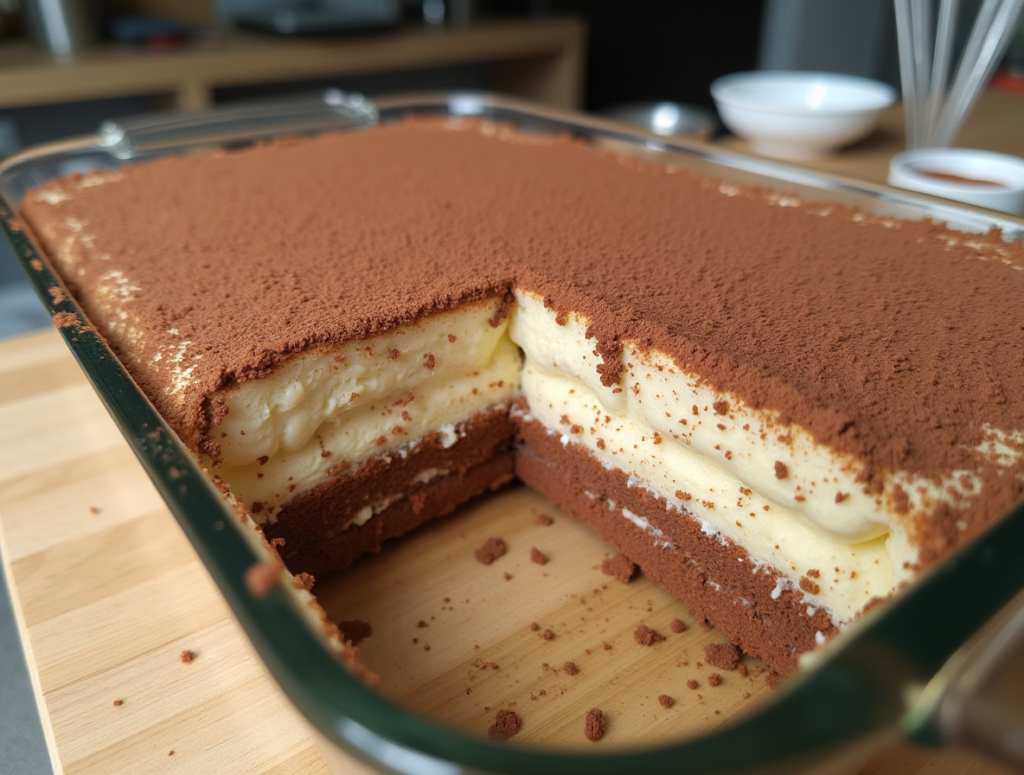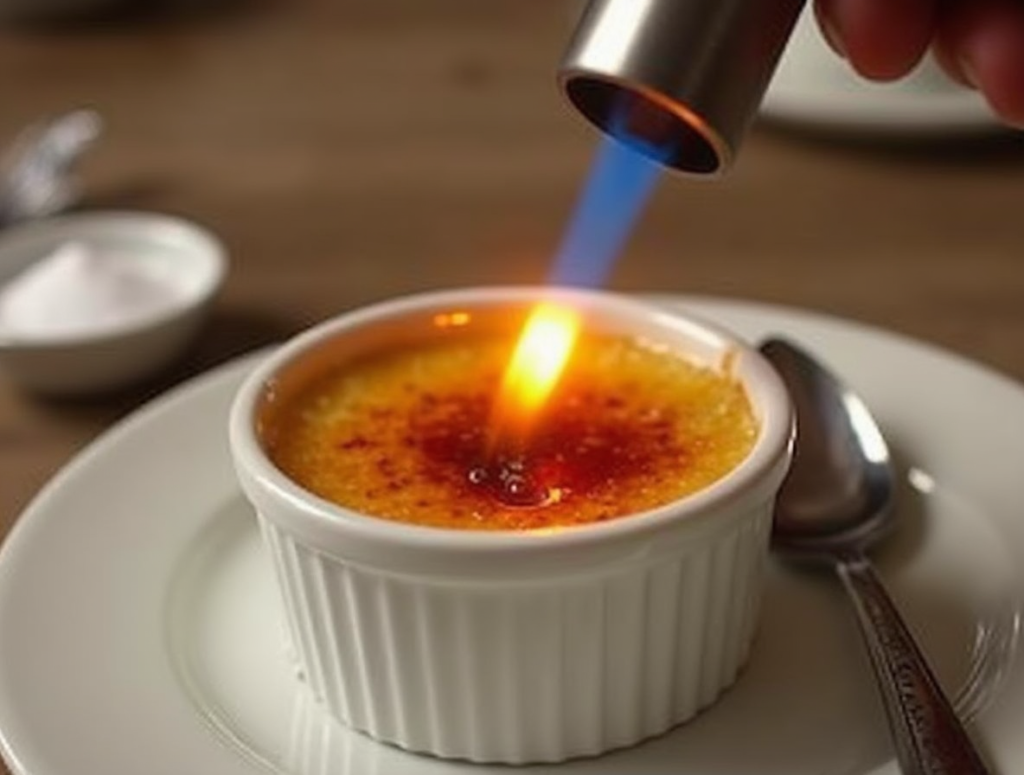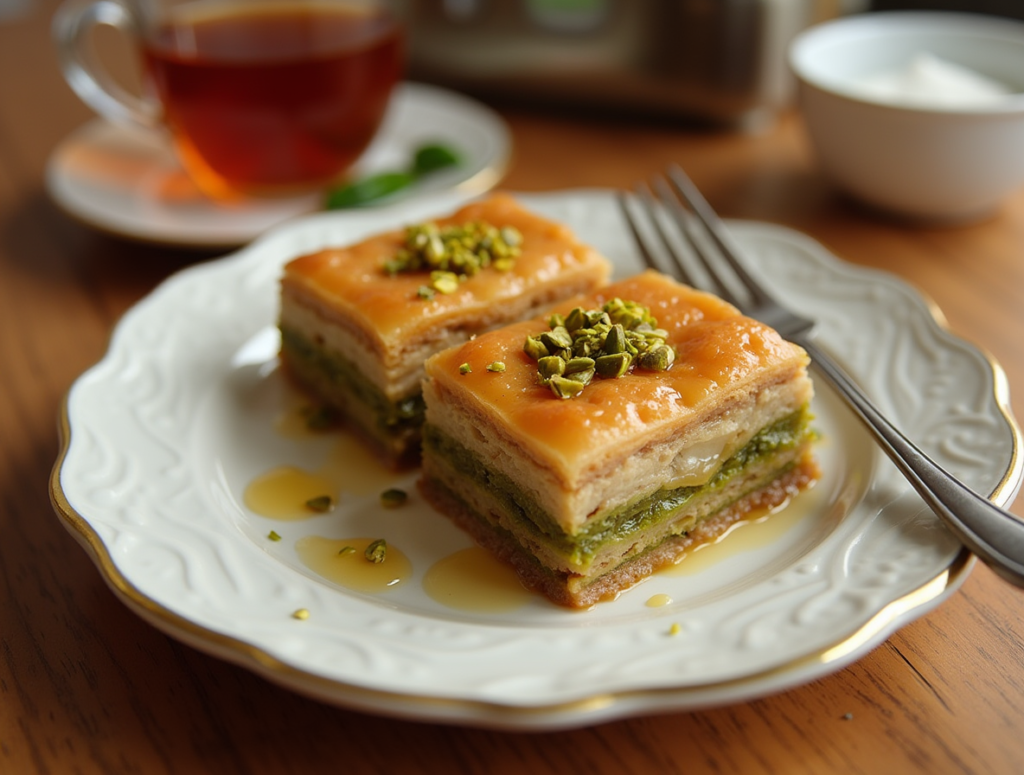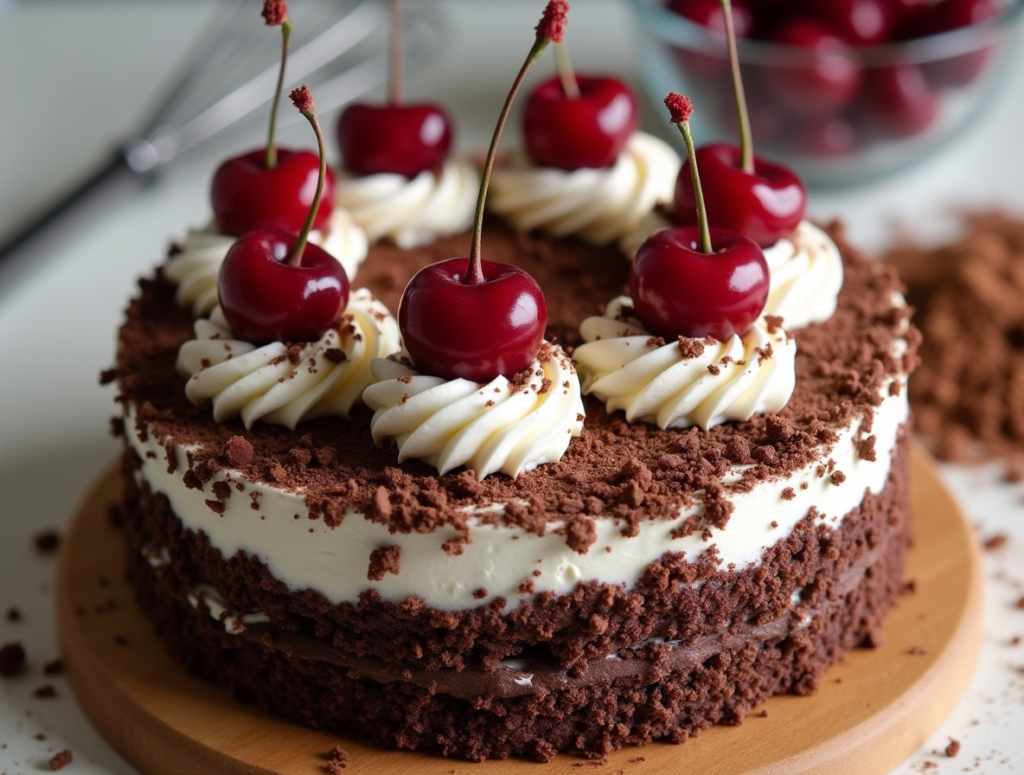Europe boasts a rich tapestry of culinary traditions and diverse cultures, each contributing to a wide variety of delicious desserts. From Italy’s creamy tiramisu to France’s flaky pastries, European desserts captivate the world with their unique flavors, textures, and stunning presentations. Among these delights, the Most Popular Dessert in Europe holds a special place, embodying the rich heritage and innovative spirit that defines the continent’s sweet treats.
In this blog post, we explore the most popular desserts in Europe. For an even broader perspective, check out this guide to 20 types of desserts to discover even more sweet delights from around the world.
We will delve into their history, regional differences, and why these European sweets are cherished by millions. Whether you’re a dessert lover or simply curious about European treats, this guide will satisfy your sweet tooth.
History of Desserts in Europe
Origins of European Desserts by Region
European desserts have fascinating histories that vary by region. Each country offers its own special sweets, influenced by local ingredients, cultural traditions, and historical events. For example, Italy’s tiramisu and France’s crème brûlée highlight their rich culinary backgrounds. Northern Europe is renowned for hearty pastries, while Southern Europe favors light, fruit-filled desserts. Indeed, the Popular Dessert in Europe serves as a shining example of this rich diversity, encapsulating the unique flavors and stories behind each treat. Understanding these origins helps us appreciate why these desserts remain beloved today.
Influence of Culture on Dessert Trends
Cultural exchanges and historical events have significantly shaped European dessert favorites. During the Renaissance, Europe embraced new ingredients like sugar and chocolate, transforming dessert-making. Additionally, immigration and trade introduced diverse cooking techniques and flavors, enriching the traditional dessert scene. Today, classic European pastries continue to evolve by blending old traditions with modern tastes. This mix keeps iconic European desserts relevant and loved by many.
Criteria for Ranking Popular Desserts
Taste Preferences Across Europe
When considering, “What is the most popular dessert in Europe?”, taste preferences play a crucial role. Europeans often enjoy desserts that balance sweetness with other flavors, such as the coffee bitterness in tiramisu or the tartness of fruits in strudel. Rich, creamy textures and elegant presentations are highly valued, making desserts like crème brûlée and panna cotta favorites. These qualities make signature European sweets irresistible to dessert enthusiasts.
Seasonal Availability of Ingredients
Seasonal ingredients greatly influence the popularity of European desserts. Fresh fruits like berries in summer and apples in fall inspire a variety of sweets that highlight each season’s best flavors, often giving rise to a Popular Dessert in Europe that perfectly captures the essence of the season. This approach keeps European desserts fresh and relevant all year round, adapting to what’s available. Seasonal desserts not only taste better but also connect deeply with local traditions and celebrations.
Social and Festive Significance
Desserts hold important social and festive roles in Europe. Many European holiday treats link to specific celebrations, such as Christmas, Easter, and national holidays. These sweets are enjoyed not just for their taste but also for their ability to bring people together and celebrate cultural traditions. The social and festive importance of these treats boosts their popularity, with one Popular Dessert in Europe often taking center stage during special occasions.
Top 10 Most Popular Desserts in Europe
1. Tiramisu (Italy)
History of Tiramisu and Its Rise to Fame
Tiramisu, meaning “pick me up” in Italian, originated in the Veneto region of Italy in the 1960s. Its unique mix of coffee-soaked ladyfingers and creamy mascarpone layers quickly made it a favorite dessert worldwide. Over the years, tiramisu gained international fame, becoming a staple on European dessert menus.
Key Ingredients and Variations
Classic tiramisu uses espresso, mascarpone cheese, eggs, sugar, and cocoa powder. However, many variations include flavors like chocolate, fruit, or liqueurs such as amaretto. These twists keep tiramisu exciting and ensure it remains a top European dessert. Whether served traditionally or with a modern flair, tiramisu stays a dessert lover’s favorite.

2. Crème Brûlée (France)
Origins of Crème Brûlée
Crème brûlée, meaning “burnt cream,” is a classic French dessert dating back to the 17th century. It features a rich custard base topped with a layer of hard caramelized sugar, created by torching the surface just before serving. Its elegant look and delightful texture contrast make it a standout European dessert.
Modern Interpretations and Trends
Today, crème brûlée comes in various flavors beyond vanilla, such as chocolate, coffee, and fruit-infused versions. European confections like crème brûlée continue to evolve by incorporating modern techniques and ingredients while keeping their classic charm. These famous European desserts remain favorites in both traditional and contemporary settings.

3. Baklava (Turkey)
Influence of Ottoman Cuisine
Baklava is a sweet pastry deeply rooted in Ottoman cuisine, popular in Turkey and the Balkans. It consists of layers of filo dough filled with chopped nuts like pistachios or walnuts and sweetened with honey or syrup. This iconic European dessert highlights the Ottoman influence on European sweets.
Types of Nuts and Syrup Variations
Different regions have their own baklava styles, using various nuts and syrups. Some prefer honey-based syrup, while others use sugar and lemon juice. These variations showcase baklava’s versatility and regional diversity, making it a beloved European sweet.

4. Gelato (Italy)
Difference Between Gelato and Ice Cream
Gelato, Italy’s version of ice cream, is known for its dense and creamy texture. Unlike traditional ice cream, gelato has more milk and less cream and air, resulting in a richer flavor. This makes gelato a top choice among European dessert favorites for those seeking a satisfying treat.
Popular Gelato Flavors in Europe
Gelato comes in many flavors, from classic vanilla and chocolate to adventurous options like stracciatella, pistachio, and fruit sorbets. These flavors highlight the creativity and skill of Italian gelato makers, making gelato a must-try European dessert.
5. Panna Cotta (Italy)
Traditional vs. Modern Panna Cotta
Panna cotta, meaning “cooked cream” in Italian, is a simple yet elegant dessert made from sweetened cream thickened with gelatin. Traditionally, it’s served with fruit sauce or caramel. Modern versions include flavors like lavender, coffee, and even savory herbs. This versatile European dessert is loved across the continent.
6. Sacher Torte (Austria)
The Story Behind the Original Recipe
Sacher Torte is an iconic Austrian dessert created by Franz Sacher in 1832. This chocolate cake, layered with apricot jam and covered with a smooth chocolate glaze, represents Viennese confectionery excellence. Its rich history and delicious taste make it one of Europe’s most famous desserts.
7. Churros (Spain)
Churros and Hot Chocolate Pairing
Originally from Spain, churros have become a favorite European sweet treat. These fried dough sticks, dusted with sugar and cinnamon, are traditionally dipped in thick, rich hot chocolate. This classic combination enhances the flavors of both churros and chocolate, making them a popular European dessert.
8. Strudel (Germany and Austria)
Classic Apple Strudel and Modern Fruit Variations
Strudel is a versatile pastry enjoyed in Germany and Austria, with apple strudel being the most famous. Filled with spiced apples, raisins, and nuts, it’s a beloved European dessert. Modern versions include fillings like cherry, cheese, and savory options, ensuring strudel remains a popular dessert in Europe.
9. Éclair (France)
The Rise of Éclairs in Patisseries
Éclairs are a staple in French patisseries, made from choux pastry filled with cream and topped with glaze. These delicate European pastries are celebrated for their light texture and rich fillings, making them favorites among dessert lovers. The popularity of éclairs in patisseries has cemented their status as a signature European treat.
10. Black Forest Cake (Germany)
Unique Elements of Black Forest Cake
Black Forest cake, or Schwarzwälder Kirschtorte, is a famous German dessert featuring layers of chocolate sponge cake, whipped cream, and cherries. The cake usually features chocolate shavings and more cherries, embodying the essence of European desserts. Its unique combination of flavors and textures makes it a standout favorite.

Regional Variations of Popular Desserts
Northern European Desserts
Northern Europe offers a range of desserts that emphasize simplicity and quality ingredients. Swedish cinnamon buns, Danish pastries, and Finnish cloudberry tarts are examples of traditional European sweets from this region. These desserts reflect Northern Europe’s love for hearty, comforting treats perfect for colder climates.
Mediterranean Influences
The Mediterranean region significantly shapes Europe’s famous desserts. Ingredients like olive oil, citrus fruits, and nuts feature prominently in desserts such as Greek baklava, Italian panna cotta, and Spanish flan. These sweets highlight the vibrant flavors and fresh ingredients typical of Mediterranean cuisine, making them essential parts of European dessert favorites.
Seasonal and Festive Desserts
Desserts During Christmas, Easter, and National Holidays
European holidays are incomplete without their traditional desserts. During Christmas, Germany enjoys stollen, a fruit bread filled with marzipan, while Italy celebrates with panettone, a sweet bread loaf. Easter brings treats like hot cross buns in the UK and kulich in Russia. These holiday desserts are not only delicious but also hold deep cultural significance, enhancing the festive spirit and bringing families together.
Street Desserts vs. Fine Dining Desserts
Iconic European Street Desserts
Street markets and fairs across Europe brim with famous European desserts, offering everything from French crepes to Italian gelato. These accessible treats let everyone enjoy Europe’s rich dessert culture on the go. Street vendors often sell freshly made sweets that reflect local flavors and traditions.
European Desserts in Michelin-Starred Restaurants
In contrast, Michelin-starred restaurants present European desserts as refined, artistic creations. Elaborate plating, high-quality ingredients, and innovative flavors elevate traditional desserts to new levels, offering a luxurious dining experience. These famous European desserts are crafted with precision and creativity, making them highlights of fine dining menus.
Healthier Dessert Alternatives in Europe
Low-Sugar and Vegan Versions of Traditional Desserts
As health awareness grows, many traditional European desserts reinvent to meet modern dietary needs. Low-sugar versions of tiramisu and crème brûlée, as well as vegan options for baklava and panna cotta, gain popularity. These healthier alternatives allow everyone to enjoy delicious sweets without compromising their dietary preferences.
Popularity of Plant-Based Frozen Treats
Plant-based frozen treats, like coconut milk ice cream and almond milk sorbets, gain popularity in Europe. These desserts cater to vegans and those with lactose intolerance, aligning with Europe’s focus on inclusive and diverse dietary choices. European dessert favorites now include a wide range of plant-based options, meeting the demand for healthier and more sustainable sweets.
How European Desserts Are Celebrated Worldwide
Influence of European Bakeries in Other Continents
European desserts have a strong presence worldwide, thanks to the global spread of European bakeries. Cities around the globe host bakeries that specialize in famous European sweets, introducing these treats to new audiences. This international presence helps European cakes and pastries become beloved favorites in different cultures.
Global Adaptations of Classic European Sweets
Global chefs and home bakers embrace European dessert favorites, adapting them to fit local tastes and ingredients. For example, tiramisu might feature tropical flavors in Asia, while crème brûlée gets unique toppings in the Americas. These adaptations show the versatility and lasting appeal of Europe’s most iconic desserts, including the Popular Dessert in Europe, allowing them to thrive in diverse culinary settings.
Dessert and Beverage Pairings
Popular Drinks to Pair with European Desserts
Pairing desserts with the right beverages enhances the overall experience. In Europe, popular pairings include wine with fruit tarts, coffee with churros, and milkshakes with cookies. These combinations highlight the flavors of both the dessert and the drink, creating a harmonious balance that elevates the enjoyment of each sweet treat. Many aficionados celebrate the Popular Dessert in Europe as a perfect example of this culinary synergy, embodying the region’s commitment to exquisite taste pairings.
Suggested Pairings for Europe’s Popular Desserts
For tiramisu, a glass of sweet Marsala wine complements its coffee and mascarpone flavors. Crème brûlée pairs beautifully with a rich espresso, while baklava is enhanced by a glass of strong Turkish tea. These dessert pairings in Europe enhance the taste and enjoyment of each sweet treat, making them even more delightful. In fact, these treats are often celebrated as a Popular Dessert in Europe, highlighting the perfect harmony between dessert and drink.
Making European Desserts at Home
Essential Ingredients and Substitutions
Creating European cakes and pastries at home requires some key ingredients and knowledge of possible substitutions. High-quality butter, fresh eggs, and fine sugar are staples in many recipes. However, for those with dietary restrictions, alternatives like almond flour, plant-based milk, and natural sweeteners work well without sacrificing flavor or texture.
Key Baking Tools for European Dessert Recipes
Having the right tools can make a big difference when baking traditional European pastries, including that Popular Dessert in Europe that everyone loves. Essential tools include a stand mixer for whipping cream and batter, a pastry brush for applying glazes, and a good-quality oven thermometer to ensure precise baking temperatures. Investing in these tools helps you achieve professional results with your homemade desserts.
The Global Love for European Desserts
International Recognition of European Confections
European desserts enjoy widespread international recognition for their quality and taste. From Italy’s tiramisu to France’s crème brûlée, these famous European desserts celebrate in restaurants and bakeries worldwide. Their enduring popularity highlights the universal appeal of their flavors and the craftsmanship behind their creation.
European Desserts in Global Cuisine
European desserts seamlessly integrate into global cuisine, influencing and being influenced by other culinary traditions. This exchange leads to innovative European sweets that blend flavors and techniques from different cultures, resulting in a dynamic and ever-evolving dessert landscape. One standout is the Popular Dessert in Europe, which embodies this fusion of tradition and modernity.
FAQs About Most popular Dessert In Europe
What Makes European Desserts Unique?
European desserts stand out due to their rich history, diverse regional influences, and focus on high-quality ingredients. The blend of traditional techniques and innovative flavors makes each dessert a culinary masterpiece.
Which European Country is Known for the Sweetest Treats?
While many European countries are famous for their sweets, France shines with its exquisite pastries and desserts like crème brûlée and éclairs. However, Italy’s tiramisu and gelato, as well as Austria’s Sacher Torte, also make significant contributions to Europe’s dessert fame.
European dessert recipes in less than 30 minutes
Yes, many European dessert recipes are designed to be both delicious and quick, often taking less than 30 minutes to prepare. For example, you can whip up a quick Italian panna cotta or a no-bake cheesecake with minimal ingredients and simple techniques. These recipes typically focus on fresh, quality ingredients and streamlined methods, making it easier to enjoy a sweet treat even on busy days without compromising on flavor.
Is dessert eaten with a spoon or fork in Europe?
The choice between a spoon or a fork in Europe really depends on the type of dessert being enjoyed. Creamy or custard-like desserts, such as puddings, mousses, or ice creams, are typically eaten with a spoon to help scoop up the smooth textures. On the other hand, firmer desserts like cakes, tarts, and pastries are usually enjoyed with a fork, allowing for neat and efficient cutting and eating. In some cases, especially with finger foods like certain pastries or cookies, no utensils are needed at all. Ultimately, the utensil used is determined by the dessert’s consistency and cultural dining traditions.
Conclusion
Europe’s dessert scene is a vibrant mix of tradition, innovation, and diverse cultural influences. While it’s hard to name a single favorite, desserts like tiramisu, crème brûlée, and baklava consistently rank among Europe’s top sweets due to their timeless appeal and delicious flavors.
One Popular Dessert in Europe that truly captures this blend of tradition and creativity is celebrated for its unique taste and cultural significance. Whether enjoyed in a cozy European café, a lively street market, or made at home, these iconic desserts offer something for everyone.

